Thinking of getting your ears pierced but not sure which style to choose? With so many different ear piercing placements, it can feel like navigating a jewelry map without a compass. From classic lobes to edgy cartilage piercings, every placement has its own vibe, pain level, healing process, and styling potential. This guide walks you through every type of ear piercing placement, what to expect, how to style it, and tips for safe healing.
Table of Contents
What Are Ear Piercing Placements?
Ear piercing placements simply refer to where on the ear the jewelry sits. Your ear has multiple zones—lobes, cartilage, inner folds, outer rims, and hidden crevices. Each area can be pierced differently, giving you a wide variety of looks from minimal to maximalist.
Think of your ear as a canvas for jewelry art. Some placements are bold and attention-grabbing, while others are subtle and chic. The fun part? You can mix and match them to create a curated ear that feels uniquely yours.
Why Ear Piercing Placements Matter
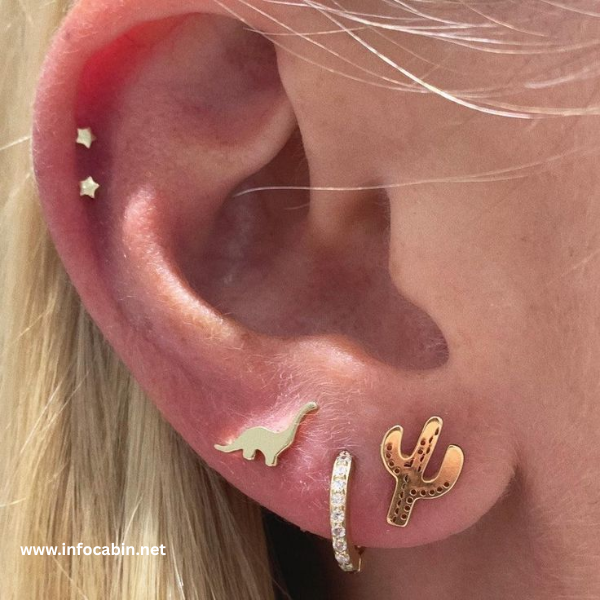
Choosing the right placement isn’t just about style—it’s about:
- Anatomy: Not every ear shape supports every piercing.
- Comfort: Some placements clash with headphones, glasses, or helmets.
- Healing: Cartilage piercings heal slower than lobe piercings.
- Style balance: Combining different placements creates a cohesive look instead of random chaos.
In short, ear piercing placements are about personality + practicality.
Major Categories of Ear Piercing Placements
There are three broad categories:
1. Lobe Piercings
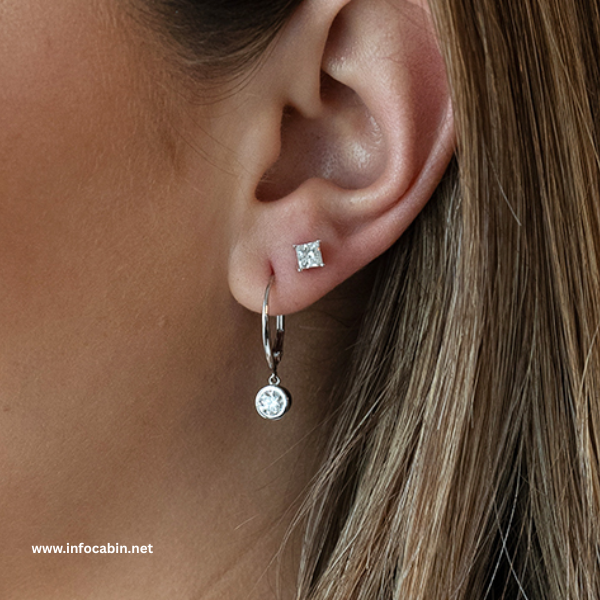
The softest, fastest-healing, and most beginner-friendly piercings.
2. Cartilage Piercings
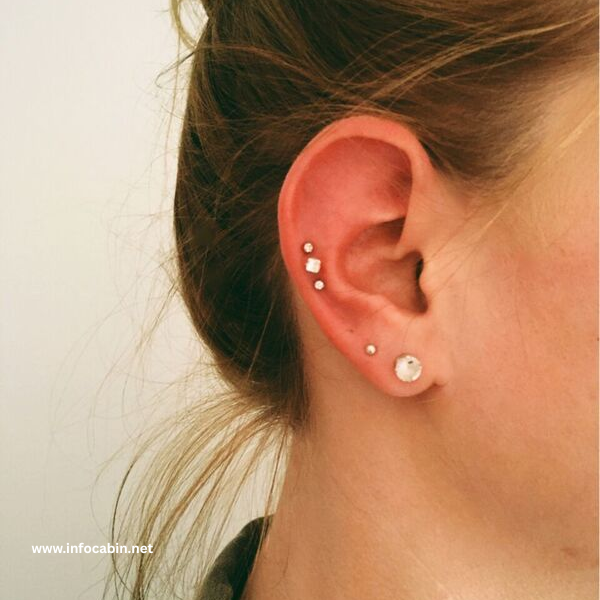
Located on the stiff, upper parts of the ear. They look striking but take longer to heal.
3. Specialty/Advanced Piercings
Unique placements inside folds and ridges that require more skill and careful anatomy checks.
Lobe Piercing Placements
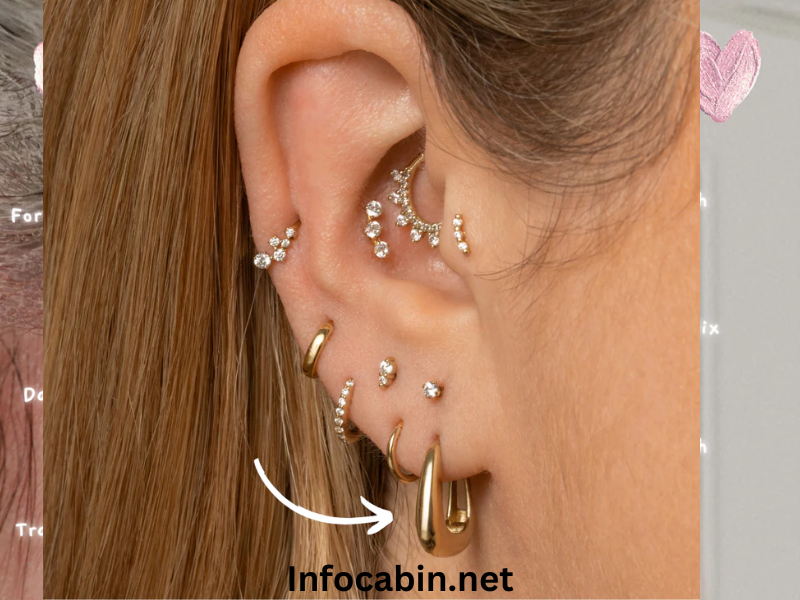
- Placement: Typically positioned in the center of the lower ear.
- Pain Level: Known as one of the least painful piercings.
Standard Lobe Piercing
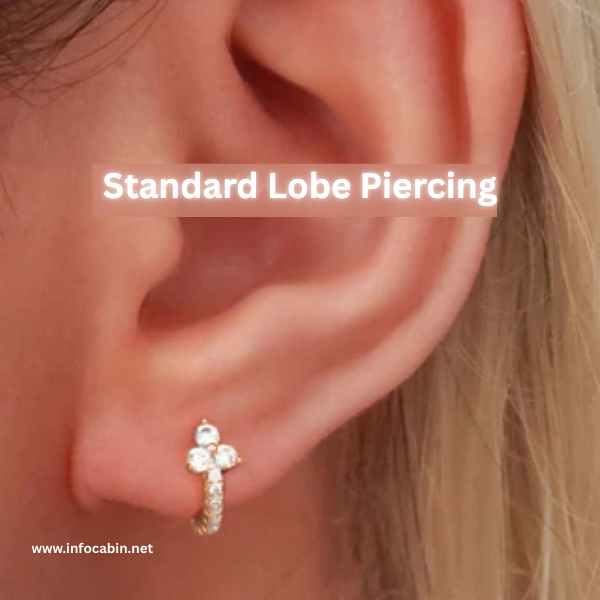
- Placement: Bottom of the ear lobe.
- Pain Level: 1–2/10 (super mild).
- Healing: 6–8 weeks.
- Style: Works with studs, hoops, and dangles. Perfect beginner piercing.
Upper Lobe Piercing
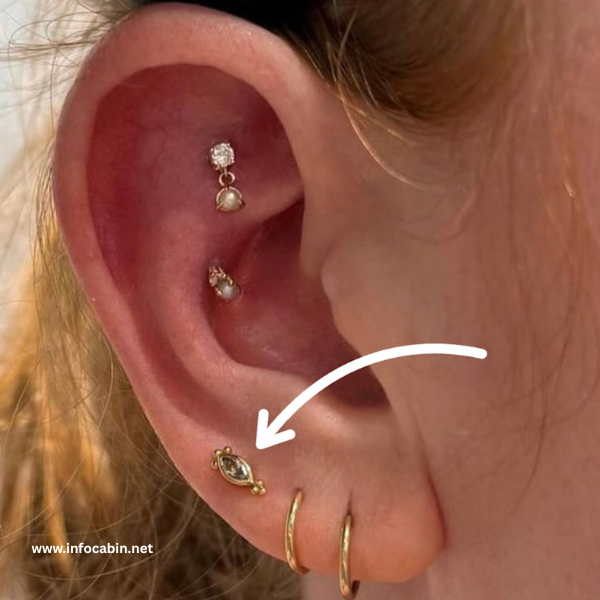
- Placement: Above the standard lobe, slightly higher up.
- Pain Level: 2–3/10.
- Healing: 6–10 weeks.
- Style: Adds layering for stacked looks.
Double, Triple, or Multiple Lobe Piercings
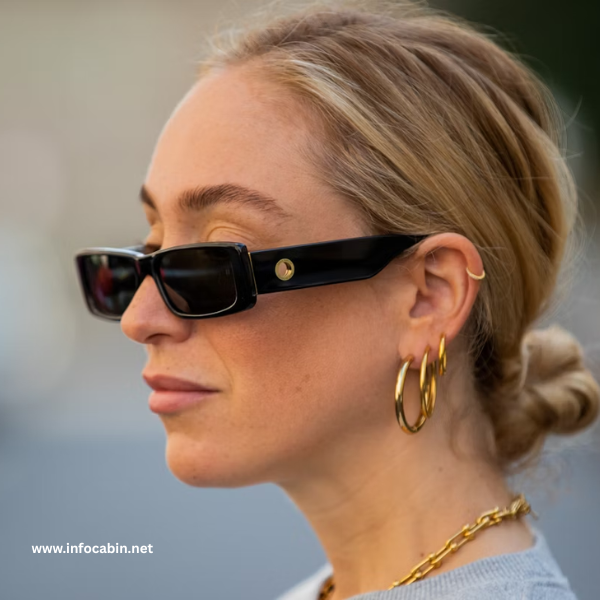
- Placement: Several piercings in a vertical line up the lobe.
- Pain Level: Still low, but more piercings = more healing spots.
- Healing: Same as standard but multiplied.
- Style: Great for earring stacks and mixing hoops with studs.
Helix Piercing
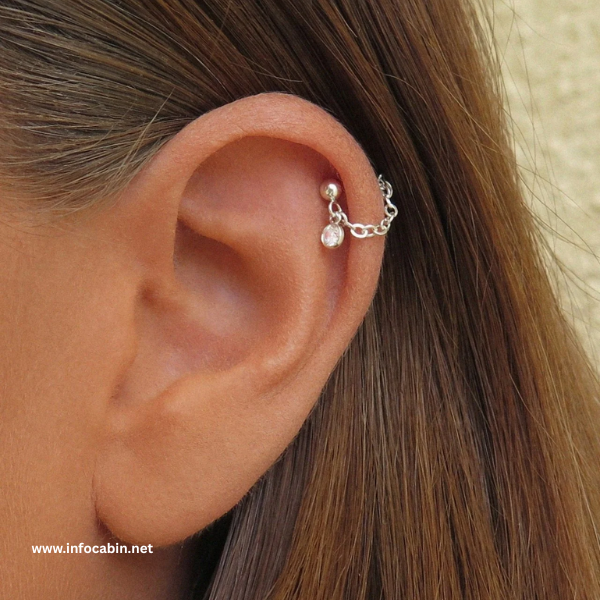
- Placement: Upper outer rim of the ear.
- Pain Level: 4–6/10.
- Healing: 6–12 months.
- Style: Studs, hoops, and chains look chic here.
Forward Helix
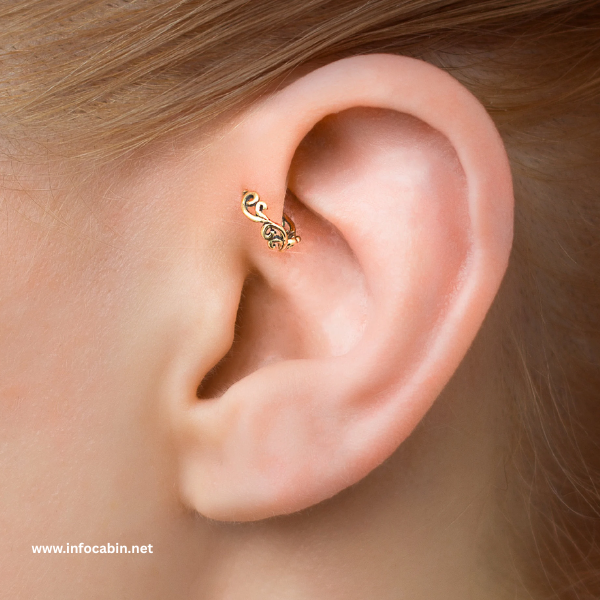
- Placement: Front side of the helix near your face.
- Style: Dainty studs create a delicate sparkle near your hairline.
Floating Helix
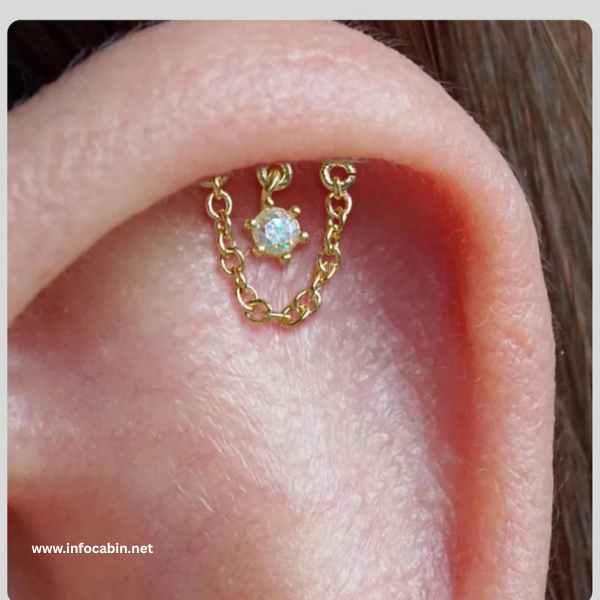
- Placement: Mid-helix with a flat-back stud, making it look like it “floats.”
- Style: Sleek and minimalistic.
Industrial Piercing
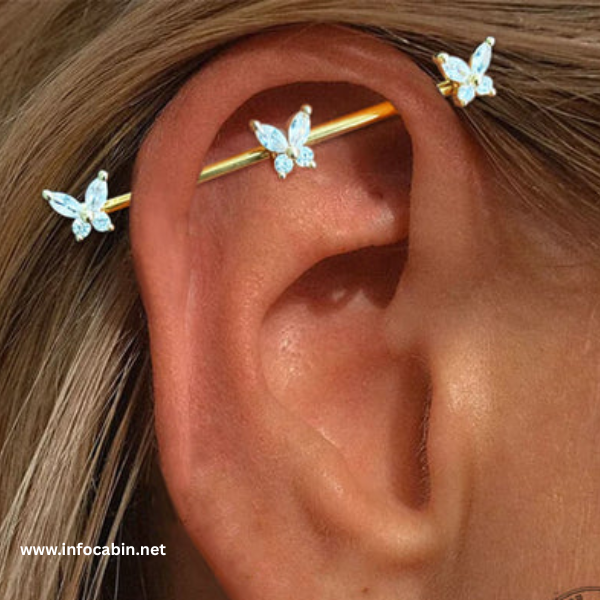
- Placement: A straight barbell connects two piercings across the top of the ear.
- Pain Level: 7–8/10.
- Healing: 9–12 months.
- Style: A bold statement piercing that screams edgy.
Conch Piercing
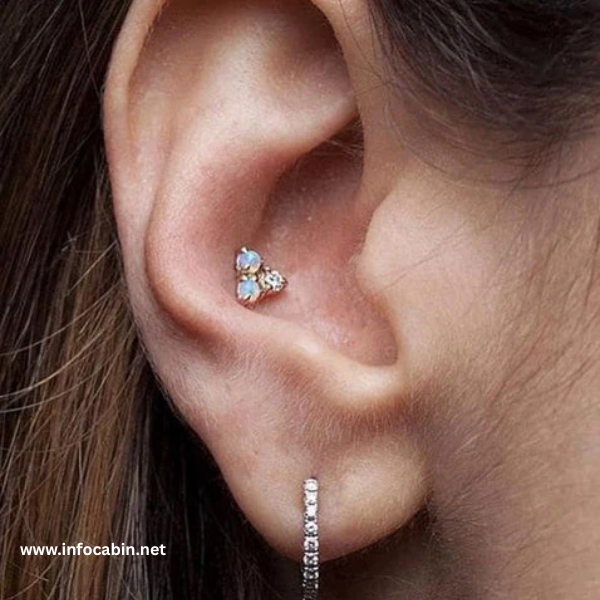
- Placement: The inner “shell” of the ear.
- Style: Studs sit flat, while hoops hug around the ear’s edge.
Tragus Piercing
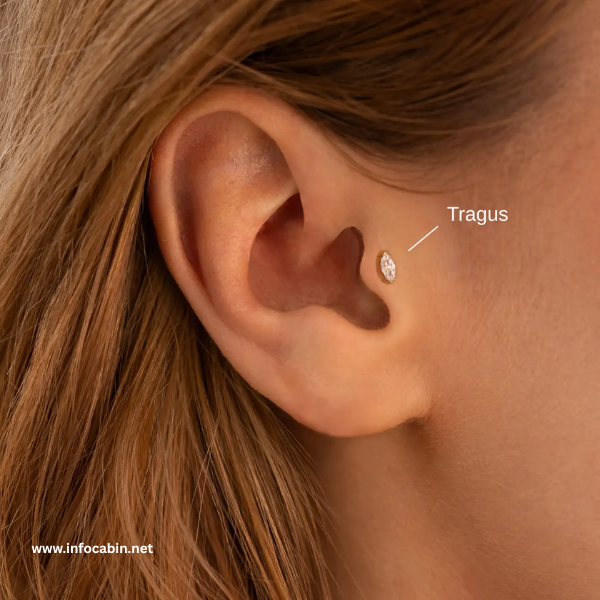
- Placement: The small flap in front of your ear canal.
- Pain Level: 5–7/10.
- Style: Small studs or dainty hoops. Works great with minimalist styles.
Anti-Tragus Piercing
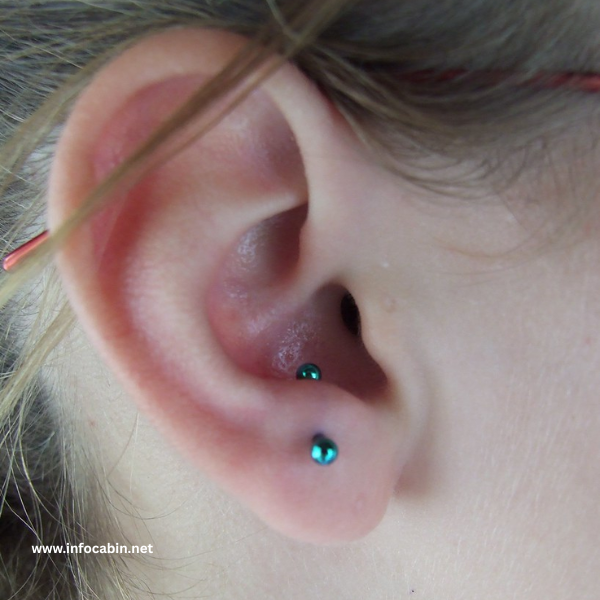
- Placement: Opposite the tragus, just above the lobe.
- Style: Unique spot for tiny gems or hoops.
Daith Piercing
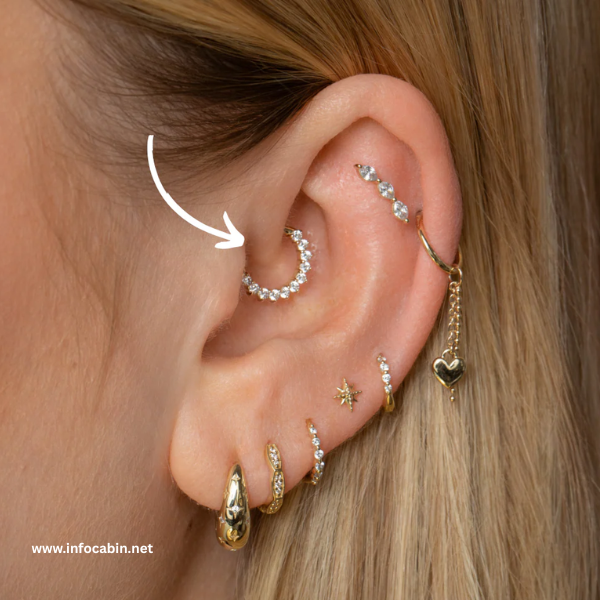
- Placement: The innermost fold above the ear canal.
- Style: Captive bead rings or heart-shaped hoops are popular.
Rook Piercing
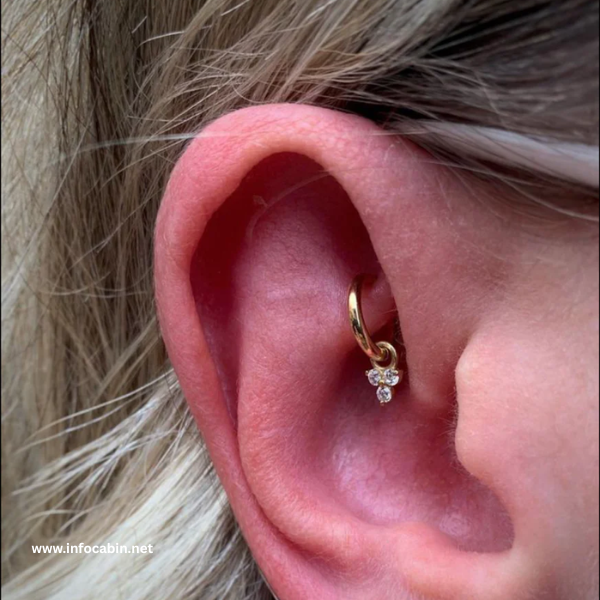
- Placement: The ridge between the inner and outer conch.
- Pain Level: 6–7/10.
- Style: Curved barbells look sleek here.
Specialty Ear Piercing Placements
Orbital Piercing
- Placement: Two piercings connected with a single ring.
- Style: Creates a “floating hoop” effect.
Snug Piercing
- Placement: Inner ridge between the outer rim and conch.
- Pain Level: 7–8/10.
- Style: Curved barbells or small hoops.
Flat Piercing
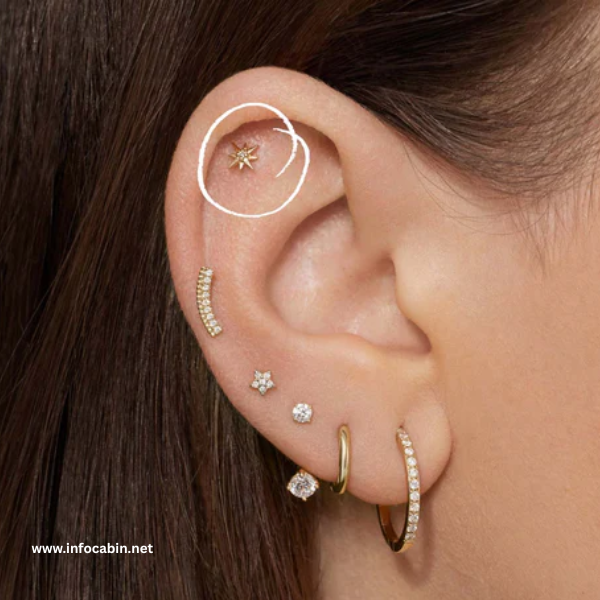
- Placement: Flat cartilage space between helix and rook.
- Style: Great for clusters and gemstones.
Transverse Lobe Piercing
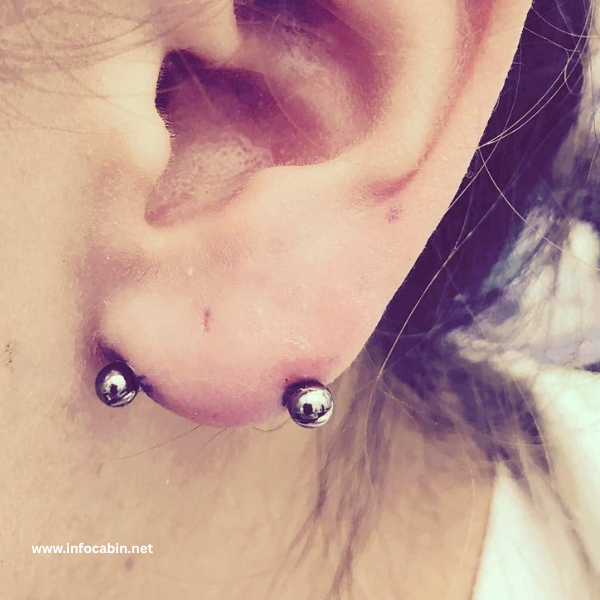
- Placement: A barbell goes horizontally through the lobe.
- Style: Unique but anatomy-dependent.
How to Choose the Right Ear Piercing Placement
Consider Your Lifestyle
- Headphone user? Avoid tragus or daith.
- Side sleeper? Helix may be uncomfortable at first.
- Contact sports? Stick to lobes or wait until off-season.
Match With Your Personal Style
- Minimalist? One or two well-placed studs.
- Maximalist? Constellation of piercings with gems and hoops.
- Edgy? Industrial or snug.
Check Your Anatomy
Not every ear suits every piercing. Trust your piercer’s advice—some cartilage areas may be too thin or thick.
Pain, Healing, and Aftercare by Placement
Pain Levels
- Least painful: Lobes
- Moderate: Helix, tragus, daith
- Most painful: Industrial, snug, rook
Healing Time
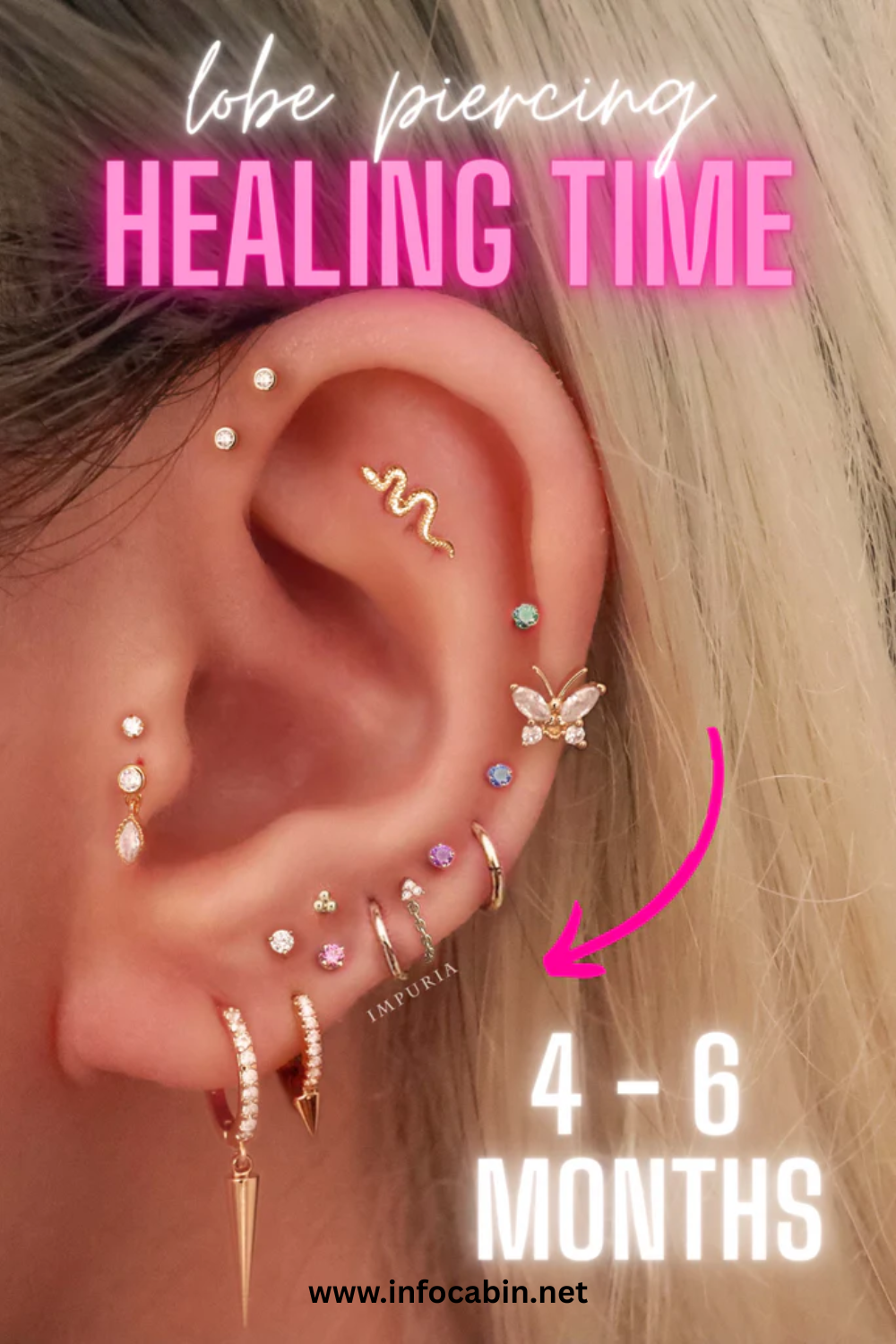
- Fastest: Lobe (6–8 weeks)
- Moderate: Tragus, daith, helix (6–12 months)
- Longest: Industrial, snug, rook (up to a year)
Aftercare Essentials
- Clean twice daily with sterile saline.
- Don’t twist or rotate jewelry.
- Avoid pools, saunas, and unnecessary touching.
- Sleep on the opposite side to avoid pressure.
Styling Ear Piercing Placements
Minimalist Ear Styling
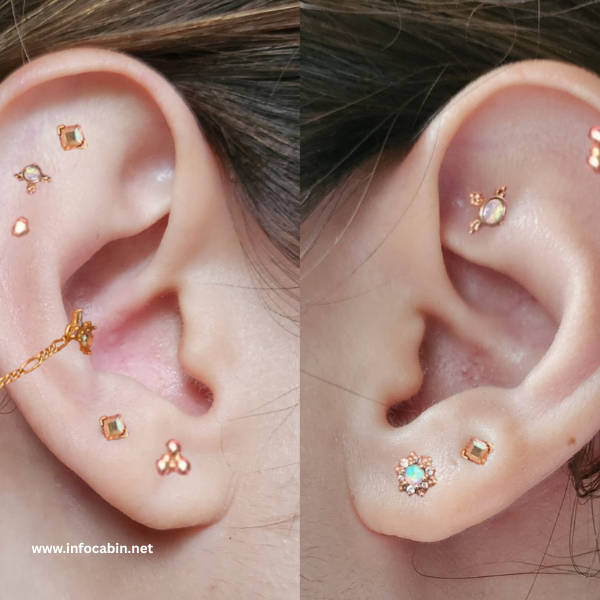
- Tiny gold studs
- Micro-gems
- Negative space for balance
Curated Ear Styling
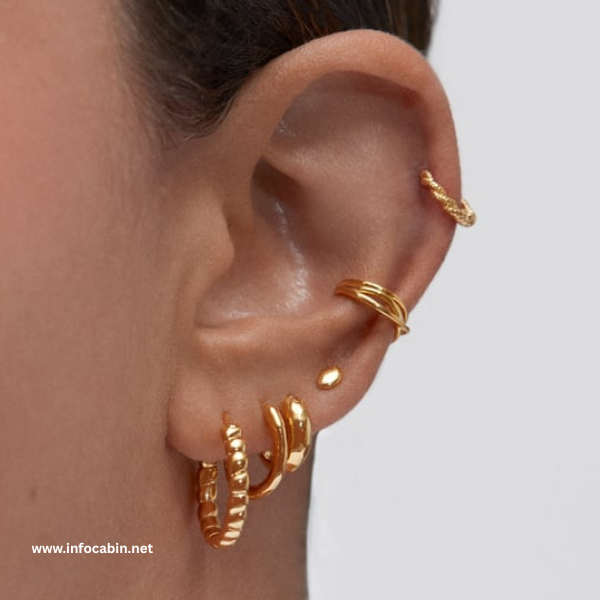
- Mix hoops and studs
- Add statement pieces like a conch hoop
- Create symmetry or asymmetry depending on taste
Bold & Edgy Styling
- Industrial barbell
- Black titanium jewelry
- Stacked piercings with chains
Combining Multiple Placements
Constellation Piercings
Tiny studs scattered across flat and lobe for a starry effect.
Symmetrical Stacks
Matching piercings on both ears.
Asymmetrical Mix
One ear full of piercings, one kept simple for contrast.
Common Myths About Ear Piercing Placements
“Piercing Guns Are Fine for Cartilage”
Nope—always use a needle. Guns cause trauma.
“Cartilage Piercings Heal in Weeks”
False—they often take 6–12 months.
“All Ears Can Handle All Placements”
Not true. Anatomy dictates options.
Long-Term Care for Piercings
- Switch to high-quality jewelry (titanium, gold) after healing.
- Keep the area clean even after full healing.
- Don’t leave holes empty for too long, or they may shrink.
Conclusion
Ear piercing placements open up a world of creativity. From the soft lobe to the bold industrial, every spot has its own personality. Choosing the right placement means balancing style, anatomy, and lifestyle needs. With proper aftercare and quality jewelry like Double Lobe Piercing Earrings, your piercings can last a lifetime—and become the perfect form of wearable art.
FAQs
Q1. What is the most popular ear piercing placement?
The standard lobe piercing is the most common and beginner-friendly.
Q2. Which piercing hurts the most?
The industrial and snug are often rated as the most painful.
Q3. How many piercings can I get in one sitting?
Usually 2–3, depending on your pain tolerance and healing capacity.
Q4. Can I wear hoops right away in new piercings?
Not recommended—start with studs for safer healing.
Q5. How do I know which placements suit my ear?
A professional piercer will check your anatomy and recommend what works best for your ear shape.

